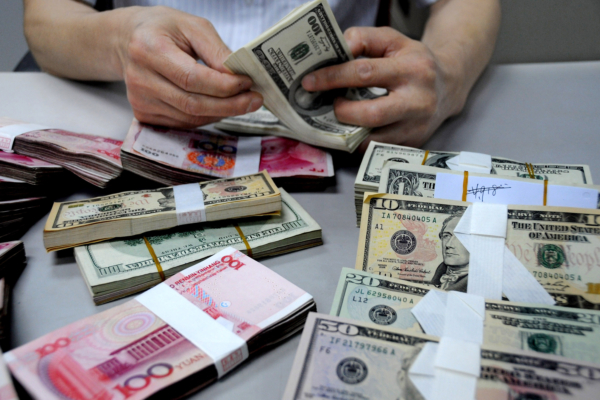The Chinese yuan to US dollar exchange rate has further weakened. Following the offshore yuan breaking the 7.30 barrier against the US dollar on June 26, on Wednesday (July 3), the offshore yuan to US dollar rate dropped below 7.31, hitting an eight-month low.
On July 3, the offshore yuan to US dollar exchange rate fell below 7.31, marking a low not seen since November 3 last year; the onshore rate dropped to 7.2735 during the day, down 21 basis points from the previous closing price, hitting a low of 7.2736, the lowest since November 15 last year.
Additionally, the central parity rate dropped 21 points to 7.1312, breaking below 7.13 for the first time in seven and a half months, with a decrease of 21 basis points from the previous trading day, accumulating a total drop of 44 basis points in the three trading days of July.
According to a research report by China International Capital Corporation, the United States maintains high policy interest rates, while the European Central Bank, the Bank of Canada, and the Swiss National Bank have turned to interest rate cuts, resulting in strong US dollar and downward pressure on non-US currencies. The onshore renminbi forward points continue to decline, and the pressure from the inverted China-US interest rate differential remains significant, with external conditions not yet supporting a stronger renminbi exchange rate.
Hong Hao, Chief Economist of BOCOM International, interprets that with the trend of global capital flowing into the United States, the renminbi exchange rate remains volatile. Meanwhile, he expects the Federal Reserve to cut interest rates in September.
According to Caixin, many market participants interviewed believe that recent data shows no fundamental improvement in the internal pressure causing the depreciation of the renminbi, and the increased uncertainty in major countries’ election results has led to a rise in hedging demand, resulting in strength in the US dollar index.
Analyst Liu Lu from Ping An Securities believes that the current pressure on exchange rate stability is greater than before when looking at the difference between the central parity rate and spot exchange rate. The next focus will be on whether the Third Plenum in July will allow for increased exchange rate flexibility.
Following the breakthrough below 7.31, a report by Donghai Futures suggests that in the short term, there is significant pressure on the domestic stock market and the renminbi exchange rate.
A researcher from a Hong Kong asset management company stated that besides the weakening pressure from the expectation of a US interest rate cut, recent trends in the US, UK, and French elections have also led to the rise in the US dollar index.

